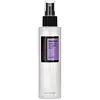What's inside
What's inside
 Key Ingredients
Key Ingredients

 Benefits
Benefits

 Concerns
Concerns

 Ingredients Side-by-side
Ingredients Side-by-side

Water
Skin ConditioningPropanediol
SolventGlycolic Acid
BufferingGlycerin
HumectantDipropylene Glycol
HumectantPropylheptyl Caprylate
EmollientSodium Hydroxide
BufferingAscorbyl Glucoside
AntioxidantNiacinamide
SmoothingSalicylic Acid
MaskingAmmonium Acryloyldimethyltaurate/Vp Copolymer
Sorbitan Sesquioleate
EmulsifyingPentylene Glycol
Skin ConditioningTocopheryl Acetate
AntioxidantXanthan Gum
EmulsifyingSodium Citrate
BufferingLysine
Skin ConditioningAzelaic Acid
BufferingMannitol
HumectantXylitol
HumectantSodium Metabisulfite
AntioxidantAndrographis Paniculata Leaf Extract
AstringentRhamnose
HumectantSaccharide Isomerate
HumectantGlycyrrhiza Glabra Root Extract
BleachingTocopherol
AntioxidantFructooligosaccharides
HumectantCaprylic/Capric Triglyceride
MaskingLaminaria Ochroleuca Extract
Skin ConditioningParfum
MaskingWater, Propanediol, Glycolic Acid, Glycerin, Dipropylene Glycol, Propylheptyl Caprylate, Sodium Hydroxide, Ascorbyl Glucoside, Niacinamide, Salicylic Acid, Ammonium Acryloyldimethyltaurate/Vp Copolymer, Sorbitan Sesquioleate, Pentylene Glycol, Tocopheryl Acetate, Xanthan Gum, Sodium Citrate, Lysine, Azelaic Acid, Mannitol, Xylitol, Sodium Metabisulfite, Andrographis Paniculata Leaf Extract, Rhamnose, Saccharide Isomerate, Glycyrrhiza Glabra Root Extract, Tocopherol, Fructooligosaccharides, Caprylic/Capric Triglyceride, Laminaria Ochroleuca Extract, Parfum
 Reviews
Reviews

Ingredients Explained
These ingredients are found in both products.
Ingredients higher up in an ingredient list are typically present in a larger amount.
Glycolic Acid is arguably the most famous alpha hydroxy acid (AHA) with tons of research backing its benefits.
It is found naturally in sugar cane but the form used in skincare is usually synthetic for purity and stability.
Glycolic acid removes the top layer of dead skin cells to allow newer and fresher ones to emerge.
AHAs work by breaking down the structural “glue” that holds old skin cells in place. When that buildup is gone, your skin can renew itself more efficiently.
Research also shows glycolic acid stimulates collagen production, helping to firm and thicken the skin over time. This is one of its biggest advantages over other AHAs.
Overall, glycolic acid helps with:
Fun fact: Glycolic acid boosts skin hydration by helping it produce molecules that increase hyaluronic acid naturally.
To work best, glycolic acid products should have a pH between 3-4 (that’s where exfoliation is most effective but still gentle on skin).
The pH and concentration of a product are key to its effectiveness:
It is normal to feel a slight stinging sensation when using glycolic acid. This usually fades as your skin adjusts.
Because glycolic acid has the smallest molecular size in the AHA family, it can penetrate deeper, which enhances its effectiveness but also makes it more likely to irritate sensitive skin.
If your skin is very sensitive or prone to rosacea, glycolic acid may be too strong; in that case, try milder options like lactic acid or a PHA instead.
Recent studies suggest glycolic acid might even help protect against UV damage. But don’t skip sunscreen! Freshly exfoliated skin is more sensitive to the sun.
Glycolic acid is a skincare superstar. It smooths, brightens, hydrates, and firms the skin. Unless you’re highly sensitive, it’s well worth adding to your routine.
Read more about some other popular AHA's here:
Learn more about Glycolic AcidWater. It's the most common cosmetic ingredient of all. You'll usually see it at the top of ingredient lists, meaning that it makes up the largest part of the product.
So why is it so popular? Water most often acts as a solvent - this means that it helps dissolve other ingredients into the formulation.
You'll also recognize water as that liquid we all need to stay alive. If you see this, drink a glass of water. Stay hydrated!
Learn more about Water